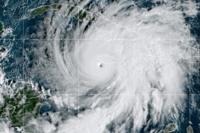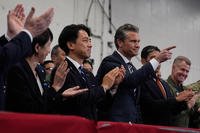The Navy has invested $1 million in devices and uniforms that help pilots relieve themselves in-flight -- and it wants to spend $2 million more to complete the effort.
One of the goals of the initiative was to provide female jet pilots with a practical way to urinate on missions that can stretch on for hours with limited mobility, officials said.
"They're flying long missions overseas," Cmdr. Eddie Park, director of diversity and inclusion at Naval Air Forces, told the Defense Advisory Committee on Women in the Services earlier this month. "Who wants to hold their pee for four hours?"
The mechanics of in-flight relief for female pilots are a challenge, not only because of physiology, but because flight suits, originally designed for male aviators, don't offer convenient access. Historically, workaround options have included wearing a diaper in-flight and practicing "tactical dehydration" to reduce the need, which can cause headaches and lead to other problems.
Related: New Device Helps Fighter Pilots Urinate. And Possibly Saves Lives
About a decade ago, a Vermont-based company developed the Advanced Mission Extender Device, or AMDXmax, a system built into underwear that featured a hose and pouch for men, and collection via something akin to a sanitary pad for women. The Air Force has already begun investing in the systems, with more than 600 fielded to its pilots as of late 2018.
A spokesman for Naval Air Forces, Cmdr. Ron Flanders, said the Navy now wants to provide the devices to all pilots -- male and female -- who want them. The service is also buying two-piece flight suits that will make it easier for helicopter pilots -- who might be able to land for comfort breaks, but may not have much time or privacy -- to relieve themselves.
To date, he said, the Aviation Medical Safety Officer has received about $1 million. That money comes from the U.S. Navy Mishap Prevention and Hazard Abatement Program (MPHA), for which Naval Facilities Engineering Command is an executor. Of that amount, $800,000 has gone to purchase 160 of the medical-grade urinary devices, which cost $5,000 apiece; the other $200,000 has been invested in two-piece flight suits.
"There are gender specific designs for this product and we are in the process of procuring both designs," Flanders said in a statement. "Some aircrew have already been outfitted with this item, therefore, we didn't buy for those that have the device. Others do not want to fly with this device and have chosen other types of urinary collection devices."
Flanders told Military.com that the initiative was begun when the issue was raised to Vice Adm. DeWolfe Miller, head of Naval Air Forces, at the Female Aviator Career Training Symposium in 2018.
Miller, he said, "was very keen on it."
The Navy wants to find $2 million more to complete the acquisition process. For now, Flanders said, the devices and suits are being distributed at the request of individual squadrons.
"The squeaky wheel gets the grease," he said.
-- Editor's Note: This story was updated to clarify the source of the funding for the Navy's initiative.
-- Hope Hodge Seck can be reached at hope.seck@military.com. Follow her on Twitter at @HopeSeck.
Read More: Proposed Ban on Tobacco Sales to Those Under 21 Would Affect Troops














